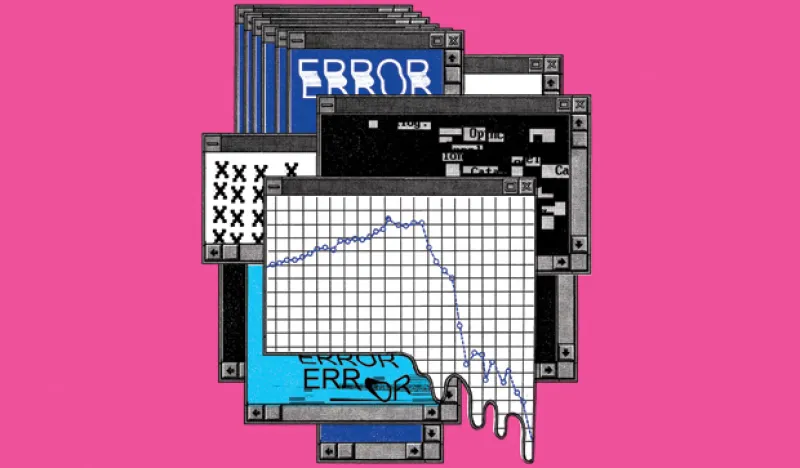Ten years ago, during the second week of a sultry New York August, Michael Mendelson was getting a sandwich at the Subway shop near the Greenwich, Connecticut, office of AQR Capital Management when all hell broke loose. As Mendelson glanced at his BlackBerry, out of nowhere, it seemed, AQR’s funds were in the red.
Very quickly, losses started snowballing, with AQR’s flagship fund down 13 percent during the first ten days of August before recovering all of it by month’s end. “You didn’t know how far it was going to go,” recalls Mendelson, a principal at AQR.
AQR was not alone. Some of the biggest and smartest hedge funds in the world suddenly tumbled in tandem, as their algorithmic trading systems went haywire.
As the events unfolded, other hedge fund managers scurried from their idyllic Hamptons retreats to contain the damage and lashed out at the quants, who turned out to be massively overleveraged and highly correlated — triggering an unwinding that was a preview of a collapse that would befall the financial world a year later. “‘These damn quants. They couldn’t get a date in high school, and now they f——ked my month,’” was the joke Peter Muller, who was running a secretive internal quant fund at Morgan Stanley at the time, liked to tell afterward, paraphrasing the frustrated fundamental managers.
But to everyone making high-stakes computerized investment bets, it wasn’t funny — it was shocking. “We had never seen anything like this before. . . . We were trained in statistics. For all intents and purposes this shouldn’t have happened,” says a manager of a major quant hedge fund who lived through the event, sleeping in his Wall Street office to try to contain the damage.
After a four-day quant rout, the Dow fell almost 400 points, then began to recover, with little overall effect on the market. But several funds ultimately did not survive the chaos that started that summer. Goldman Sachs Asset Management, which in 2006 ran the largest hedge fund empire in the U.S., eventually ended up shuttering two of its most prestigious funds, Global Alpha and Global Equity Opportunities, after losing billions of dollars. Tykhe Capital, whose funds had lost between 17 percent and 31 percent by August 9, also eventually shut down.
The brutal reckoning has been permanently seared into the memories of the math geniuses running such heralded names as Goldman, Renaissance Technologies, and AQR — all of whom seemed to have had no clue why their rational world was suddenly turned upside down. It also spooked investors for years afterward, as they shunned the quants and the inscrutable black boxes they run. Then, quietly, money began filtering back into the strategy. In 2010 managed futures started to come back; by 2013 a full-blown resurgence in quant equity funds was underway.
Now the nerds can get all the dates they want. These days the hype about quants is impossible to ignore, owing to a combination of performance and a flood of assets into the strategy. Alpha’s Rich List of top-earning hedge fund managers was dominated by quant managers this year, and the Wall Street Journal detailed the quants’ rise in a splashy multipart series. Meanwhile, investment firms are hiring Ph.D.s — mathematicians and computer scientists — at a record pace as they look for new ways to differentiate themselves in a technological arms race. Everyone is talking about using big data, the type of information that comes from web scraping, social media, satellite imagery, and credit cards.
Today’s quants dominate the top tier of hedge funds and account for 17 percent of all hedge fund assets. Since 2010 systematic strategies have taken in 29 percent of hedge fund inflows, which is approximately two times their share of total hedge fund industry assets, according to a recent Barclays report that estimates quants now manage about $500 billion, double the amount they held in 2007.
Moreover, the top seven quants now run $373 billion — that’s more than 10 percent of all hedge fund assets. These include the U.K.’s Man Group and Winton Group and U.S. firms Bridgewater Associates, Renaissance, AQR, D.E. Shaw, and, perhaps most notably, Two Sigma, which has been the biggest beneficiary of the boom. In 2007 it had only had $3.7 billion in assets, but it now runs $39 billion, making it the fifth-largest U.S. hedge fund. AQR’s firmwide assets had ballooned to $195 billion as of June 30.
Even non-quant hedge funds like Dan Loeb’s Third Point and Dmitry Balyasny’s eponymous shop are getting into the act. Steven Cohen, who has long had an internal quant strategy at his hedge fund and now family office, has reinforced his commitment to the strategy by investing $250 million in Quantopian, a quant trading startup.
With the money pouring in and the hype machine working in overdrive, however, some insiders who remember the events of a decade ago are starting to whisper: “Will quants’ newfound success lead to another meltdown — one perhaps even bigger than before?”
This is an excerpt. To read the entire piece, click here.







